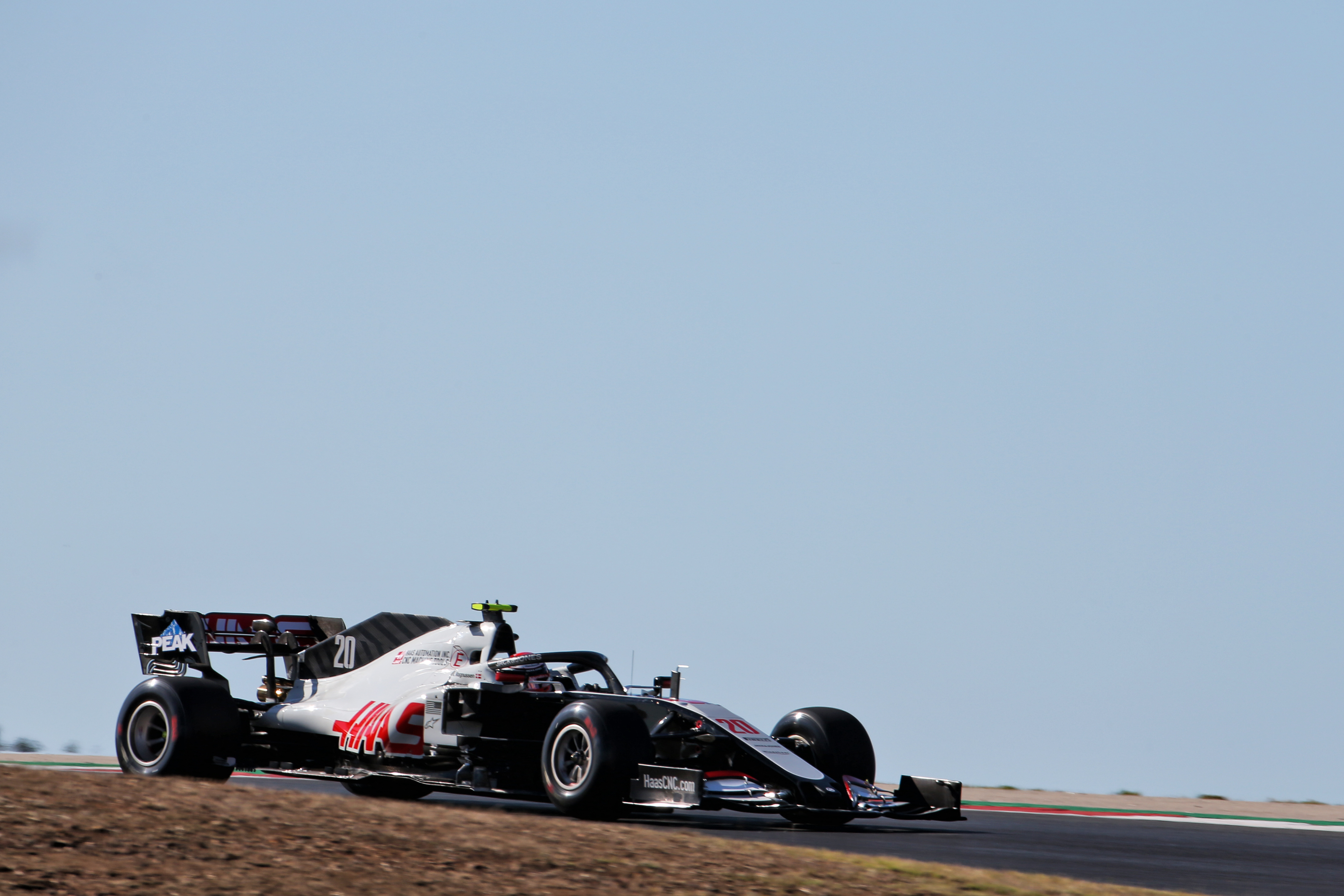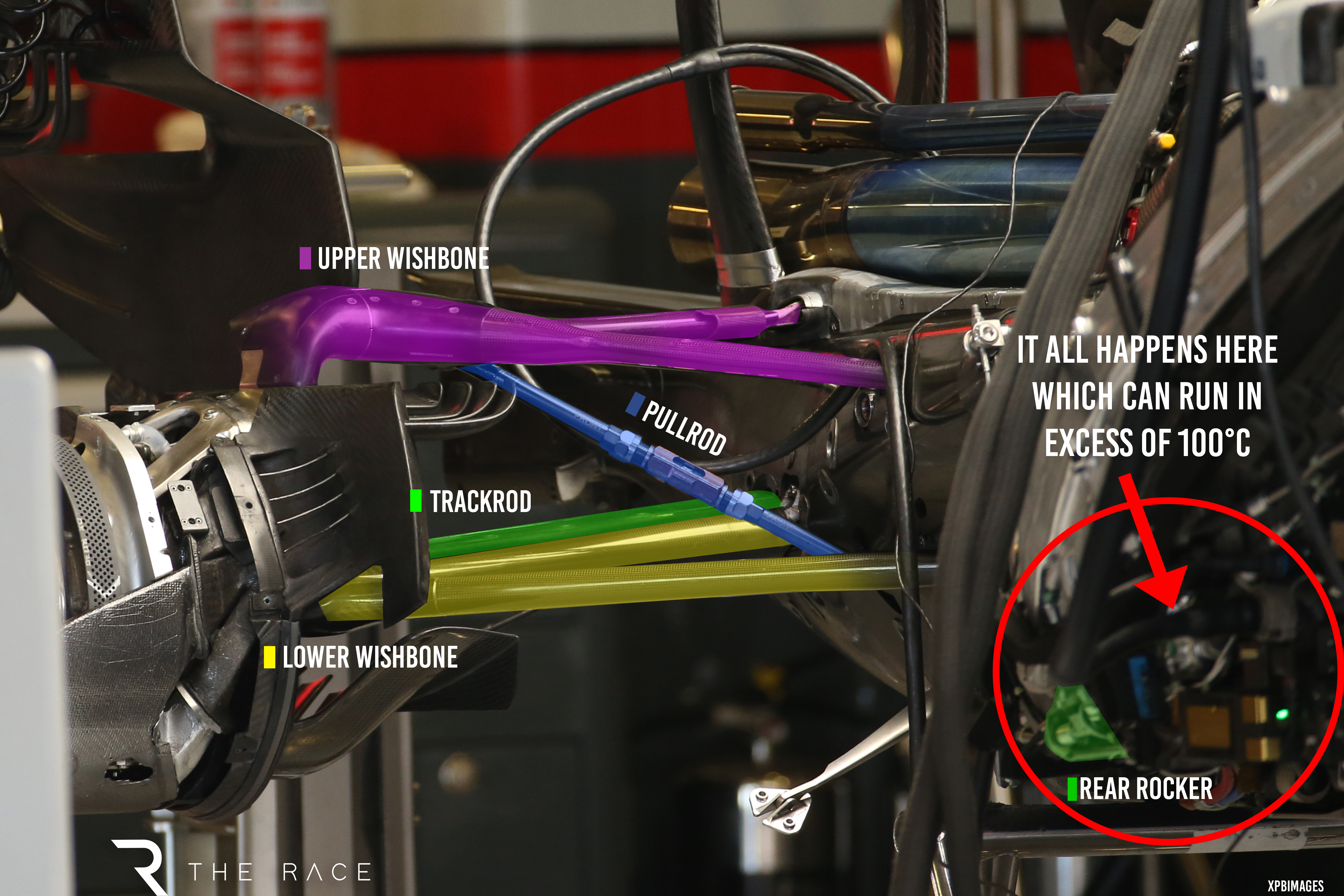Up Next

Romain Grosjean has revealed the Haas team has struggled all season with the rear suspension overheating, which results in unpredictable swings in the aerodynamic balance of the car.
The problem, which is explained in detail below, has impacted both Haas drivers, although it has caused more issues for Grosjean than for team-mate Kevin Magnussen and has proved particularly problematic during the Portuguese Grand Prix weekend.
“We struggled with the rear suspension overheating, meaning that the ride height keeps changing at the rear and from one lap to another we can pick up up to 4.4% of aero balance [centre of pressure],” said Grosjean when asked by The Race about his qualifying problems.
“I really feel for my race engineer because they roll the dice and they decide which flap angle we’re going to go on, but we never know where it’s going to end up. We have had the issue with it all year long but this weekend it has been really exaggerated for some reason so we’re struggling with that and the car is never the same from one lap to another.”
Grosjean says the team does not know what has caused the problem. In particular, it has led to problems between sessions once the car has cooled down, which has contributed to the session-to-session variability Haas has struggled with this season.
“From when it gets hot at the end of FP3, it gets [one] ride height and then it cools down and then you start qualifying with a different one and then every lap the rear suspension heats up and then the rear ride height changes,” said Grosjean.
“We don’t have any idea [what is causing it]. We see it a little bit on Kevin’s car but it’s always been minor compared to ours and this weekend it has just – as an example I picked up 3% of aero balance in the long run yesterday, so it’s a fair bit.”

Magnussen says that this problem “changes the behaviour of the car in an unpredictable way” because of the variability of ride height.
Team principal Guenther Steiner confirmed the problem has existed all season but that new parts trialled this weekend related to the hydraulic suspension have apparently not eliminated the problem.
“We have had this issue since the beginning of the year and it took a few races to understand it,” said Steiner.
“We tried a few options to cool the system and I don’t know how much difference it makes – if it dictates the ride height of the car doesn’t move anymore, or moves in the wrong direction.
“It’s the hydraulic suspension in the rear. I don’t know how bad it was today, sometimes it seems to be working better. We brought new parts this race and I guess they don’t work as written on the box, so we keep on working on it.”

GARY ANDERSON EXPLAINS…
Maintaining a consistent rake angle – front to rear – is critical to a car’s aerodynamic performance. Obviously, the ride heights will change with the varying speeds that a car goes through on a lap and the rake will also alter, but it needs to alter consistently lap after lap.
When you see the mechanics alter the front wing angle with a couple of turns on the front flap, this might just move the centre of pressure either way by 0.5%. So what Grosjean is talking about – a 3 to 4% change and perhaps even slightly more – that is a monster change. It doesn’t surprise me that the car is a bit inconsistent and basically a bit of a pig.
We have seen on quite a few occasions this year that either Magnussen or Grosjean can be reasonably competitive at the end of an FP3 session but when they go out for qualifying, they are nowhere. So I don’t doubt they really do have a problem
The big question is, what can it be? The suspension on these cars is quite complicated and to add to that the rear is working in a very hot environment.
To me, it’s not the getting too hot that’s the main problem. Instead, it’s actually the cooling down at the end of a session that’s the issue. Haas does all its set-up work around a car that has a certain ride height and when it goes out at the beginning of the next session the car has cooled down and this then creates a different ride height. So the aerodynamic balance changes.

I don’t know the layout of the Haas suspension in detail, but if it was simply the dampers getting too hot then some cooling ducts would probably improve the situation. But I suspect it is more to do with the hydraulic actuators they use to transfer the movement from the suspension actuators to the springing medium.
These will be housed somewhere in the engine-to-gearbox bellhousing, which is a very hot location. The actual springing medium could be in the sidepod somewhere, or they could even have an air spring supporting the car.
The normal trend with all of this is to design everything too small. Then the temperature change has a bigger effect on the volume of the system, creating a change on the rear ride height.
Haas has a close technical relationship with Ferrari and uses its engine and gearbox. It also uses most, if not all, of the 2020-specification Ferrari rear suspension systems. Perhaps this is also one of Ferrari’s problems – it wouldn’t surprise me. It has already reported that the rear of the car is its biggest focus for the rest of 2020 and into next year.



